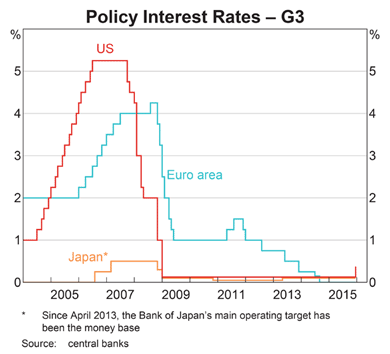The FT has a great article that’s a must read for macro watchers and includes this chart highlighting the problem facing global monetary policy, namely the US dollar’s rise amid the slaughter of ephemeral wealth in emerging markets:

This tightening at a critical juncture could be a repeat of the 1937 recession as policy makers mistake the Great Recession for a cycle, and not a structural secular bear market.
More from FT:
Notably, the US central bank delayed a widely expected borrowing shift last September after the market turmoil triggered by China’s surprise devaluation of the renminbi. Bond market prices imply diminishing expectations of further US rate increases this year, while the American economy so far has yet to see a boost in consumer spending from the dramatic drop in oil prices.
The challenge facing policymakers is that investors continue their exit from commodities, shares and corporate bonds, spurring a stampede that hurts confidence among companies and consumers.
The Fed is supposed to have closed the door on the post-crisis era, but with interest rates still close to zero and scant prospect of fiscal stimulus, the worry is that policymakers have exhausted the tools available to them.
Indeed. With the continued failure of Abenomics to boot in Japan, even fiscal stimulus cannot address the distinct lack of aggregate demand, as the interest rate “gun” has almost zero ammunition left:

It all comes down to China, again. More market watchers are expecting another huge stimulus package from the Middle Kingdom to save the near $4 trillion in losses so far exacted on global stock markets and to stave off the next recession.
But therein lies the problem. The global economy needs a normal expansion/recession cycle to keep excess and malinvestment turning into runaway systemic failures that can turn into broader depressions.
The emerging market crisis, nor China’s growth problem is not going to be solved by lowering interest rates, more QE or as the bullhawks at the Fed would have it, raising rates in the face of a domestic recession risk and zero inflationary risks.
The solution lies much deeper within the economic system and the realisation that while credit enlivens economies, debt can ruin them for decades:
